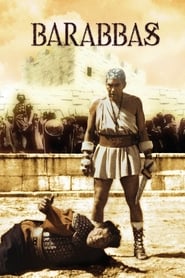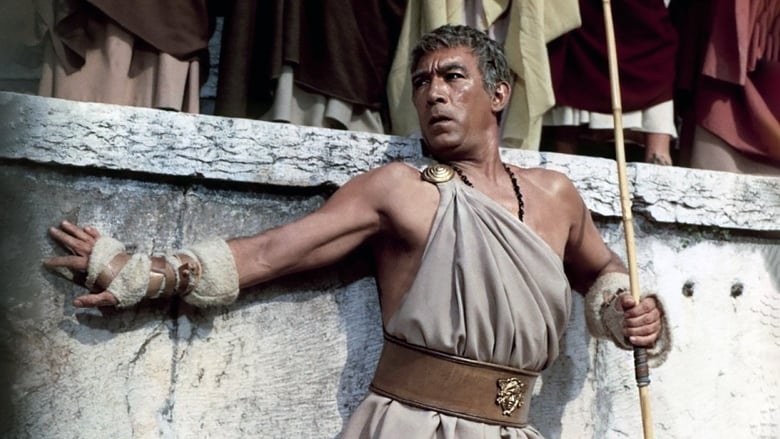“Barabbas 1961” follows the life of a criminal who is spared from crucifixion. He wanders aimlessly, seeking spiritual redemption with no avail, as he witnesses the miracles of Jesus Christ, eventually choosing to become a gladiator in a futile attempt to find purpose in his life. The film is a dark, haunting portrayal of the human psyche and the search for meaning in an ultimately meaningless world.

CLICK HERE⭳⭳⭳🎞️_Watch Barabbas 1961 English Subtitles_
Review
Barabbas: A Story of Redemption and the Human Condition
The story of Barabbas has intrigued audiences for centuries. It is a tale of redemption, the human condition, and the complexities of human nature. Released in 1961, the movie Barabbas remains one of the most influential films of its time. With its powerful performances, lush cinematography, and thought-provoking themes, it is still relevant today.
The storyline follows Barabbas (Anthony Quinn), a notorious outlaw who is imprisoned for his crimes. He is set to be executed alongside Jesus Christ but instead, Pontius Pilate (Arthur Kennedy) releases him in exchange for Christ’s crucifixion. Barabbas is then forced to confront his inner demons as he tries to come to terms with his freedom and newfound purpose.
The plot explores themes of redemption, faith, and morality. Through Barabbas’ character arc, we see how even those who are deemed ‘irredeemable’ can find hope and salvation. The film also delves into the religious tensions of Ancient Rome and how individuals were forced to reconcile their beliefs with their place in society.
The cast delivers exceptional performances that bring these complex characters to life. Quinn’s portrayal of Barabbas captures both his fierce bravado as an outlaw and his inner turmoil as he grapples with his fate. Kennedy’s Pilate captures the political complexity of his role while Silvana Mangano provides a hauntingly beautiful performance as Rachel.
One quote that stands out from the film is when Rachel says to Barabbas: “You have been given a second chance at life. Do not waste it.” It is a sentiment that resonates with audiences today who understand the value of second chances.
The historical accuracy of the film has been subject to criticism over the years. However, it remains an insightful depiction of Ancient Rome and its relationship with Christianity.
One aspect that makes this film stand out is its lush score, created by Mario Nascimbene. The music elevates each scene and captures the emotional depth of the characters.
The popularity of Barabbas has endured over time due to its timeless themes and powerful performances. It has been cited as an influence on filmmakers such as Martin Scorsese and Mel Gibson.
The film was shot on location in Italy, providing a stunning backdrop for the narrative. The cinematography captures both the grandeur of Rome and the intimacy of individual characters’ struggles.
Overall, Barabbas is a powerful tale that remains relevant today. Its themes of redemption, faith, and morality are universal and continue to captivate audiences worldwide. Through exceptional performances and beautiful cinematography, it provides a unique perspective on Ancient Rome and its relationship with Christianity.
Critics have applauded the film for its thought-provoking themes and strong performances. However, some have criticized it for its historical inaccuracies and heavy-handed approach to religion.
Barabbas was nominated for several awards at the time of release including an Academy Award nomination for Best Art Direction-Set Decoration, Color (Mario Chiari & Arrigo Equini). Despite not winning any major awards, it remains a significant film in cinema history.
The development of the film was fraught with challenges including budget constraints and casting difficulties. However, director Richard Fleischer managed to create a film that has stood the test of time.
The dialogue is emotional and impactful while also being historically accurate. Each line is delivered with intensity by the talented cast members.
One scene that stands out is Barabbas’ initial reaction to being freed from prison. He runs through the streets shouting “I’m free!” before collapsing in tears as he realizes how lost he truly is without his identity as an outlaw.
Gossip surrounding the production includes rumors that Quinn was difficult to work with on set due to his method acting techniques. However, this did not affect the quality of his performance or the overall success of the film.
The special effects in Barabbas are minimal but effective. The crucifixion scene is particularly powerful, conveying the brutality of this form of punishment.
The crews responsible for bringing this film to life were numerous and talented. From set designers to costume makers, each played a part in creating the immersive world of Ancient Rome.
Overall, Barabbas remains a significant film that continues to captivate audiences with its themes and performance. It is a reminder that even those deemed beyond redemption can find hope and purpose if given a second chance at life.
Technical Data

- Runtime : 137
- Release : 1961-12-23
- Genre : Adventure, Drama, History
- Cast : Anthony Quinn as Barabbas, Silvana Mangano as Rachel, Arthur Kennedy as Pontius Pilate, Katy Jurado as Sara, Harry Andrews as Peter
- Crew : Richard Fleischer as Director, Raymond Poulton as Editor, Dino De Laurentiis as Producer, Christopher Fry as Writer, Ivo Perilli as Writer
- Popularity 15.388
- Budget : 0
- Revenue : 0
- Company : Dino de Laurentiis Cinematografica, Columbia Pictures
- Summary : Epic account of the thief Barabbas, who was pardoned for his crimes and spared crucifixion when Pilate offered the Israelites a choice to pardon Barabbas or Jesus. Struggling with his spirituality, Barabbas goes through many ordeals leading him to the gladiatorial arena, where he tries to win his freedom and confront his inner demons, ultimately becoming a follower of the man who was crucified in his place.
- Tagline : The man of violence in whose place Christ died
